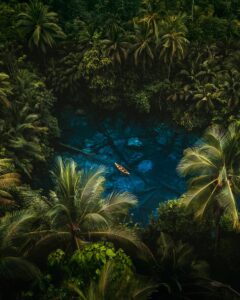
Tom Fähndrich (@tofenpics): Best of the Week 47 at #nomadict
Tom shares the journey behind his winning photography, from a passion for exploration and remote places to field lessons, composition choices, and color grading.
This article takes us through Jonny’s adventures in New Zealand and Australia, where he honed his photography skills and learned valuable lessons, culminating in his vision for the future – owning a production company, creating content for distinctive brands, and focusing on personally meaningful projects.
I’m deeply passionate about traveling because my parents instilled it in me early on. We used to take vacations in Europe, where I fell in love with different cultures and stunning landscapes. Moreover, my parents’ adventures and shared stories always ignited my curiosity. Consequently, I’ve developed a strong interest in exploring and immersing myself in new places. My enthusiasm for photography is closely linked to my journeys to these unique locations, where I aim to capture the essence of each site. There’s an incredible thrill in being in a new setting and snapping photos. It’s when I’m at my best, and my creative inspiration flows freely!
My pursuit of photography accelerated when I arrived in New Zealand. The breathtaking landscapes, especially the sheer scale and beauty of the mountains and lakes on the South Island, left me in awe. I lived in Queenstown for two years and had everything on my doorstep for adventure and photography. It felt like I had a shortcut to amazing photo opportunities! This experience allowed me to capture images constantly, and during this period, I significantly honed my photography skills. I also spent one year in Australia on Lord Howe Island, a small, remote tropical island 600km off the coast of Sydney. It was a magical place rich in plant and animal life, a truly ecologically diverse and untouched paradise!
These two countries provided the perfect platform for my growth as a photographer, from studying weather patterns to ensure I captured the perfect shots to venturing off the beaten path, searching for hidden gems and unique perspectives to photograph.
One of the standout experiences in New Zealand was the invitation to embark on an offroading adventure deep within the remote valleys of the South Island. This journey was nothing short of epic and gave me valuable insights into my photography capabilities. The terrain was rugged and unstable, posing a challenge for capturing shots, especially from a moving vehicle. Winter was the ideal season for this excursion, as the lower water levels in the rivers made for manageable crossings. Higher rainfall swells the rivers during other seasons, making them much more difficult to traverse.
In the heart of winter, most of the precipitation takes the form of snow, which blankets the towering mountains. Driving through a rocky valley surrounded by these snow-capped giants was a breathtaking sight, particularly during sunrise and sunset. It presented the perfect backdrop for some of the most spectacular shots I’ve ever taken.
Another unforgettable moment was when I captured my first image of a Kea Parrot on my way to Milford Sound, New Zealand. This moment was especially significant because I had previously seen photographs of this parrot taken by another photographer, sparking my desire to photograph one myself.
My opportunity came on my second trip to Milford Sound. The day I finally captured the image was wet and rainy, conditions I find ideal for photography. The Kea parrot was hanging around the car park at one of the lookout points, providing a golden opportunity to snap a shot of this iconic bird. I could barely contain myself as I was so excited. I managed to get some super sharp images of the parrot, and I was so happy with the outcome! I didn’t manage to capture them in flight, which I was disappointed about as they have beautiful orange feathers under their wings, but I’ll have to leave that for next time. Either way, I was beyond happy, and this photo significantly impacted my growth as a photographer, drawing the attention of various brands and companies and giving my work greater exposure.
I also landed my first photography gig in New Zealand, documenting an offroading expedition. I felt a mix of nervous anticipation and immense excitement as we ventured into a remote valley in the South Island. While I knew there would be breathtaking scenery all around us, I wasn’t sure what to expect.
The experience taught me to make quick decisions, given the fast-paced and ever-changing nature of the environment, especially considering it was the winter season. I became adept at swiftly setting up and composing shots, capturing the vehicles navigating the rugged, boulder-strewn terrain, particularly when crossing rivers. Additionally, I spent a lot of time observing because another, more experienced photographer was on the job. I picked up valuable tips and tricks along the way, greatly improving my workflow.
In shooting and editing, I had full confidence in producing high-quality images for our clients. This gig was pivotal in launching my photography career, providing the foundation for a portfolio of client work that opened doors to future opportunities.
Here are four valuable lessons I’ve learned in my career so far, through personal and professional projects:
I used to rush to capture as many shots as possible when I arrived at a location, fearing missed opportunities. I’ve since realized the benefits of slowing down. Now, I prefer to take fewer, more carefully composed shots. This approach allows me to step back, appreciate the scenery, and find new perspectives for my photography, ultimately improving the overall composition of my photos.
In the creative field of photography, it’s easy to get caught up in comparing yourself to others, especially with the influence of social media. While it’s essential to appreciate and support fellow creatives, acknowledging your progress is equally important. Celebrate your achievements, focus on continuous self-improvement, and enjoy your unique journey as a creative. The journey itself is one of the most rewarding aspects of what we do.
I’ve had experiences where I left my camera gear behind, thinking I wouldn’t need it, only to miss great opportunities. Now, I always ensure my camera gear is ready to go. You never know when unexpected and exciting photo opportunities will arise, often when you least expect them. Being prepared allows you to capture those moments as they happen.
I’ve significantly improved my work by dedicating time to planning my photo shoots. I scout the location in person whenever possible, noting perspectives and angles for shooting. When in-person scouting isn’t feasible, I turn to online resources for inspiration from others who have been to the same location. Additionally, I consider weather conditions and choose the optimal time, such as sunrise, sunset, or waiting for specific weather, to achieve softer lighting that complements the environment for more atmospheric and striking images.
Contrary to planning pictures, I prefer to approach my travels, especially road trips, more spontaneously. A flexible plan is great because it allows for adaptability and opens up opportunities for exploration. You can take detours or venture off the beaten path to discover new, exciting, lesser-known places. This strategy adds to the overall excitement of the journey. Sometimes, the best plan is having no plan at all, as things have a way of working out.
For instance, when I hitchhiked across New Zealand, I had a rough plan and a loose timeline, but I knew nothing was set in stone. While in Mt Cook National Park and having spent one day capturing the stunning landscape, I realized I needed to find a way to get to Christchurch the next day, about a 6-hour drive away. I didn’t have any means of transportation, and there were few people around as winter approached.
I met a guy named Julian in my hostel room. We started chatting about national park hikes and shared stories of our adventures. As luck would have it, he mentioned that he was leaving for Christchurch the next day, and I managed to catch a ride with him. I vividly recall the sense of relief I felt in that moment. It’s an experience that has stayed with me, reminding me of the blend of stress and excitement that often accompanies traveling and road-tripping.
The beauty of road trips and adventures lies in the journey, all the people you meet, and the stories you collect along the way. These things are the most remarkable aspects of road-tripping and exploring new places.
Mount Cook was an amazing experience, by the way, where my flexible approach to planning was rewarded with a photograph I am still proud of. I like to plan my shots, as I mentioned earlier, but this one was more luck than anything as I arrived late into Mt Cook National Park, and I knew I didn’t have much time to reach the Mt Cook viewpoint on the Hooker Valley track. It was raining, and the clouds were getting darker and darker. As I went to the lake, I saw this glacier lightly covered by fading light in the distance. I only had a couple of minutes to capture this shot. My heart was racing in pure excitement and anticipation. It’s safe to say it was worth it!
Light plays the most crucial role in photography, particularly when it comes to post-processing. It serves as the foundation for an image, offering a natural and seamless look to the scene. When the lighting is spot on, it significantly reduces the post-processing work needed to achieve the desired result.
Additionally, composition is of utmost importance. Maintaining balance within an image is key, and techniques like the rule of thirds can be invaluable. A fundamental aspect of composition is ensuring that the subject complements its surroundings without overwhelming the overall picture. Avoiding clutter within the frame is equally vital, as an overly busy image can detract from the subject and its overall impact. Simplicity often yields the best results.
Patience is a virtue when it comes to landscape photography, too. Waiting for the ideal conditions for the photo style you aim to capture is a common scenario. Whether it’s waiting for a storm to pass or for specific weather patterns, it’s essential not to become disheartened or impatient. Embrace the waiting period by exploring different perspectives or simply enjoying the moment, taking a break, or having a snack, especially after a long hike.
Finally, having fun makes all the difference. The best images are often the result of enjoying the process. Photography began as a passion and hobby, so keep sight. Immerse yourself in your surroundings, relish the moment spent in nature, and let the joy of the experience shine through in your work. In my case, I’ve consistently produced my best work when fully engrossed in the moment and appreciating the beauty of the natural world.
So, photography is also more than taking beautiful images. It is about capturing the emotion and essence of a single moment and sharing that with the world. My photos aim to invoke a sense of moodiness emphasized by using tones and textures within the image. For example, if I shoot during bad weather, I try to use that to my advantage to dramatize the image’s mood to create an immersive experience for the viewer. I aim for my photos to have a sense of realism mixed with an ethereal dreaminess as I want the viewer to imagine themselves within the image they are looking at to create their own story.
For instance, for the below, I followed these editing actions:
1) Adjusting the image’s exposure is fundamental in setting the desired mood. You can make the scene appear brighter for a vibrant look or darker for a moody atmosphere.
2) Lowering the shadows within the image is a technique to enhance depth and contrast, adding dimension to the overall composition.
3) Reducing the clarity of the image is a method to create softer edges around the subject and to achieve a gentler, more diffuse overall lighting effect.
4) Using the HSL sliders, you can manipulate the colors within the image. Typically, it’s preferred to maintain the original color palette, but in certain instances, oversaturating or experimenting with color theory to ensure complementary colors within the scene can make the image more visually appealing.
5) Gradient masks are frequently employed to introduce additional shadowing at the bottom of the image, effectively directing the viewer’s focus toward the central subject. A similar approach can be taken with the sky, either intensifying or reducing the light, depending on the desired effect. Increasing exposure with a gradient mask creates more negative space to accentuate the subject in some cases.
6) A Radial filter introduces light into the scene, especially when dealing with harsh lighting conditions or shooting slightly before or after optimal lighting. This technique helps restore glow and accentuate the subject. Manipulating light is a powerful tool that can greatly enhance an image, guiding the viewer’s focus and taking it to a higher level, particularly when there isn’t a single dominant subject in the scene.
Sometimes, a photo is almost ready when taken in-camera, and a little tweaking is needed. Other times, post-production makes you realize the potential a picture could have that you first didn’t see. The latter is what happened with this photo.
My friends and I decided to embark on a surf trip to Dunedin, located on the South Island of New Zealand. We were not particularly skilled surfers, but we thought it would be a fun adventure. We were aware that Dunedin was renowned for its excellent surf conditions. On the day of our arrival, the swell was unusually substantial, measuring between 6-8 feet, which felt enormous to us. Despite our limited surfing skills, we tackled the whitewash and had a blast.
Since our time was limited, we aimed to make the most of our visit. The following morning, we made an excellent choice to head to the famous Tunnel Beach for sunrise. As a photographer, I walked down to the beach, filling my memory card with photos while my friends pressed ahead. During the descent to the beach, a captivating headland came into view. One of my friends climbed to the top of this headland to glimpse the sunrise further down the coast.
I swiftly retrieved my camera and took a shot, not fully realizing the remarkable composition. When I transferred the image to my laptop, I recognized its full potential. The lighting was perfect, and the sunrise was nothing short of spectacular. The light uniquely bathed the headland, casting an enchanting yellow glow over the sandy rock and creating a captivating interplay of colors within the image. It was one of those extraordinary photographic moments that reminded me why I love photography and why I am working so hard toward my photography career goals.
Ten years from now, I envision owning a production company dedicated to creating video and photography content for distinctive brands. I also plan to focus on projects that are personally meaningful to me, whether they involve capturing the unique landscapes of the Middle East or documenting extreme sports expeditions in the Arctic. To help me achieve these goals, I will employ certain strategies.
Firstly, I recognize the importance of consistency in my work. Consistency is a key component of success. It provides a solid foundation and structure upon which to build. This consistency can manifest through various means, whether maintaining a consistent presence on social media or ensuring that my work exhibits cohesiveness in alignment with the creative style of photography I aim to produce.
Additionally, I intend to contact more businesses and brands for collaboration proactively. This strategy not only helps in gaining exposure but also in establishing strong, lasting relationships that can lead to unique partnerships. Such associations can be instrumental in achieving my long-term aspirations in photography and videography.
There is always something new to learn, and I want to see how my career will evolve while I put in the effort.

Tom shares the journey behind his winning photography, from a passion for exploration and remote places to field lessons, composition choices, and color grading.
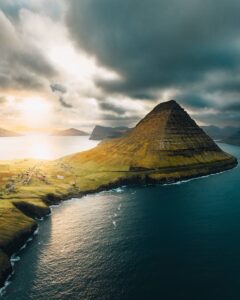
Join us in the Faroe Islands for a unique photo tour, where you’ll elevate your creative skills with expert guidance from Ronald Soethje and Nomadict.
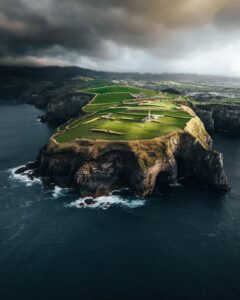
Join us in the Azores for a unique photo tour, where you’ll elevate your creative skills with expert guidance from Ronald Soethje, Bruno Ázera, and Nomadict.
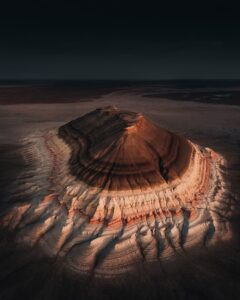
In this article, Forest shares how years of chasing scale, silence, and raw landscapes shaped his approach to photography, from the deserts of Kazakhstan to the volcanic ridges of Iceland. He talks about how he uses light, texture, and vast negative space to create images that feel both intimate and overwhelming.
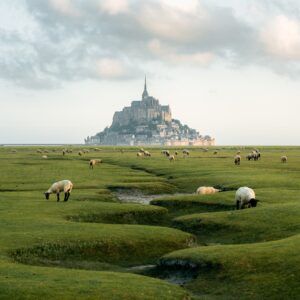
Simon shares the journey behind his photography, from early inspirations to field techniques, editing, and the story of the winning shot that shaped his path.

In this article, Miro shares how his love for cinematic music evolved into a deep passion for photography and how he uses light, color, and atmosphere to turn the streets of Prague into living film scenes.

In this article, Stefanie reveals how her background in physics sparked her passion for astrophotography and how she blends science with creativity to capture the beauty of the night sky. Readers will discover her approach to color, contrast, and editing, as well as her aurora photography workflow.

Spanish photographer Yhabril captures the profound connection between humans and the mountains that shaped him. Growing up in the Pyrenees, his work bridges outdoor sports, landscapes, and celestial scenes — often blending athletes, moonlight, and wilderness into striking visual stories.
